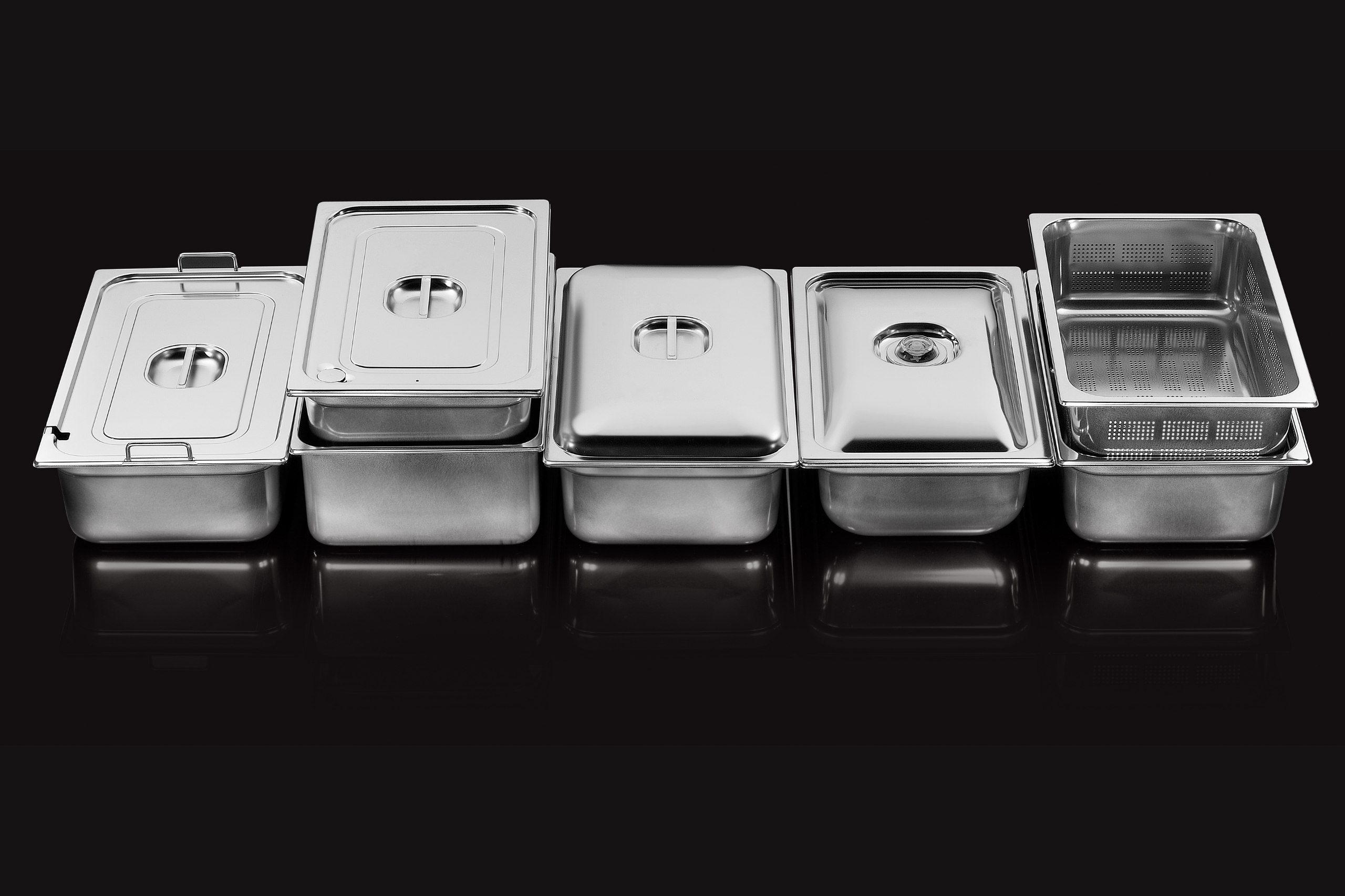NEUHEITEN

24 Februar 2022
Our Gastronorm containers are not ordinary pans.
The choice of a stainless steel container over another is often thought to be of no importance in the kitchen, but it is often overlooked that there are elements that can make a difference in terms of both pan quality and food safety. In this short article we would like to clarify some basic concepts that we hope will guide you in the correct choice of Gastronorm containers.
THE CHOICE OF MATERIAL
When choosing a Gastronorm container, the material plays a major role. Stainless steel is one of the most commonly used materials, but certain aspects must be taken into account.
Mori 2A uses mainly AISI 304 (1.4301) stainless steel. Compared to 200 series steels, AISI 304 has a very good level of deformability, which allows machining performance to be optimised, guaranteeing a finished product with an excellent price/quality ratio. Other substantial characteristics are listed below:
- AISI 304 is an austenitic steel that can be used in contact with foodstuffs according to Ministerial Decree 21/03/1973 and subsequent updates and amendments;
- The starting material of our Gastronorm containers is in the „ANNEALED“ state, i.e. in the best condition of corrosion resistance. Our products are made of stainless steel with a nickel content above the minimum value, which promotes a further increase in corrosion resistance;
- Our pans are designed and manufactured in compliance with the UNI 631-1 standard.
THE PLANNING
They are not just simple containers because at Mori 2A there is a careful and detailed study of both technical and functional aspects.
- The thicknesses of the pans are specially designed to ensure greater strength and non-deformability;
- Reduced radii for maximum content;
- stacking step to allow optimum storage;
- Calibrated edge flatness allow best aesthetics and bending resistance
THE PRODUCTION
In order to produce a high quality Gastronorm pan, it is essential that the container follows a certain production process, characterised by several steps that guarantee an optimal result in terms of durability and corrosion resistance. Here are some of the steps that are essential to us:
- ANNEALING TREATMENT: consists of heating the stainless steel containers to a sufficiently high temperature (approximately 1000-1050°/C) to remove the alterations and tensions caused by the molding process, and keeping this temperature for the time necessary to solute all carbons and then cooling them down sufficiently quickly to prevent their precipitation;
- PICKLING, PASSIVATION AND TUMBLING TREATMENTS: are necessary to remove any trace of residues due to the production process, promote the formation of the passive layer, reach the requested finishing condition, according to the aesthetic requests and to further enhance corrosion resistance. Corrosion tests performed on salty vapors conditions for over 1500 hours confirm the finished containers do not get corroded at all
- WASHING: inside the tunnels, containers are placed on conveyor belts and flooded with jets of controlled alkaline solution as they advance. The final stages of processing consist of rinsing with tap water and a final rinse with super-demineralised water.
TESTS AND CERTIFICATIONS
Another essential requirement is that the containers comply with the most recent European regulations (FCM Regulation (EC) No. 1935/2004) as well as the requirements of GMP (Good Manufacturing Practices – (EC) No. 2023/2006) on traceability, i.e. systems for identifying the production and processing stages that contribute to producing an article. Furthermore, it is essential that the pans, being FCM, respect the global and specific migration limits of Nickel, Chromium and Manganese under the reported test conditions:
• Simulating agent: acetic alcohol 3% P/V;
• Time and temperature: 30 minutes at 100°C – repeated contact
• Ref.: Italian regulation DM 21/03/1973 and modifications